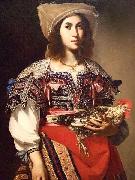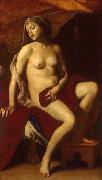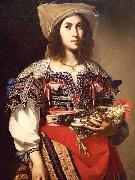|
||||||||||
|
|
||||||||||
|
Woman in Neapolitan Costume by Massimo Stanzione 1635 Italian oil Pintura Identificación:: 74978 Vea nuestra galería en Suecia |
Woman in Neapolitan Costume by Massimo Stanzione 1635 Italian oil 1635 Oil on canvas cjr 1635 _ _Oil_on_canvas _ cjr |
|||||||||
|
|
||||||||||
|
Cleopatra Pintura Identificación:: 76126 Vea nuestra galería en Suecia |
Cleopatra Date 1630s Medium Oil on canvas Dimensions 169 x 100 cm (66.5 x 39.4 in) cyf Date_1630s _ Medium_Oil_on_canvas _ Dimensions_169_x_100_cm_(66.5_x_39.4_in) _ cyf |
|||||||||
|
|
||||||||||
|
Woman in Neapolitan Costume Pintura Identificación:: 76589 Vea nuestra galería en Suecia |
Woman in Neapolitan Costume Date 1635 Medium Oil on canvas Dimensions ? x cm cyf Date_1635 _ Medium_Oil_on_canvas _ Dimensions_?_x_cm _ cyf |
|||||||||
|
|
||||||||||
|
1 | Artista Previo Próximo Artista | |||||||||
|
|
||||||||||
| Massimo Stanzione | ||||||||||
| (also called Stanzioni; c. 1586 - c. 1656) was an Italian Baroque painter, mainly active in Naples. Massimo Stanzione was an Italian Baroque painter. Born in Naples in 1586, Massimo was greatly influenced by Michelangelo Merisi da Caravaggio, but what earned him the nickname of The Neapolitan Guido Reni was his sophisticated and graceful style. The thing that distinguished Massimo art from Carravaggism was that he combined Caravaggio dramatically lit and brutally realistic style with the classical and lyrical manner of Bolognesi painters. Though his preliminary training is uncertain, it is thought that he studied with Fabrizio Santafede; however, most of the influence he received was from Caravaggio. Art historians believe that Stanzione developed his career as an artist in Rome. It is thought that he bagan his career as a portraitist. Some of his most famous works include Portrait of a Woman in Popular Costume, and Portrait of Jerome Banks. Between 1617 and 1630, it is believed that he traveled between the papal city and his hometown of Naples exploring different styles of art. Also influenced by Caravaggio were Artemisia Gentileschi, Simon Vouet, and Carlo Saraceni. During Stanzione career a movement that changed the style of art was formed. Stanzione was a part of this movement. This movement transformed the dark, contrasted Caravaggio-styled art into Bolognese colorism and soft art. | ||||||||||
|
|
||||||||||
IntoFineArt Co,.Ltd.












